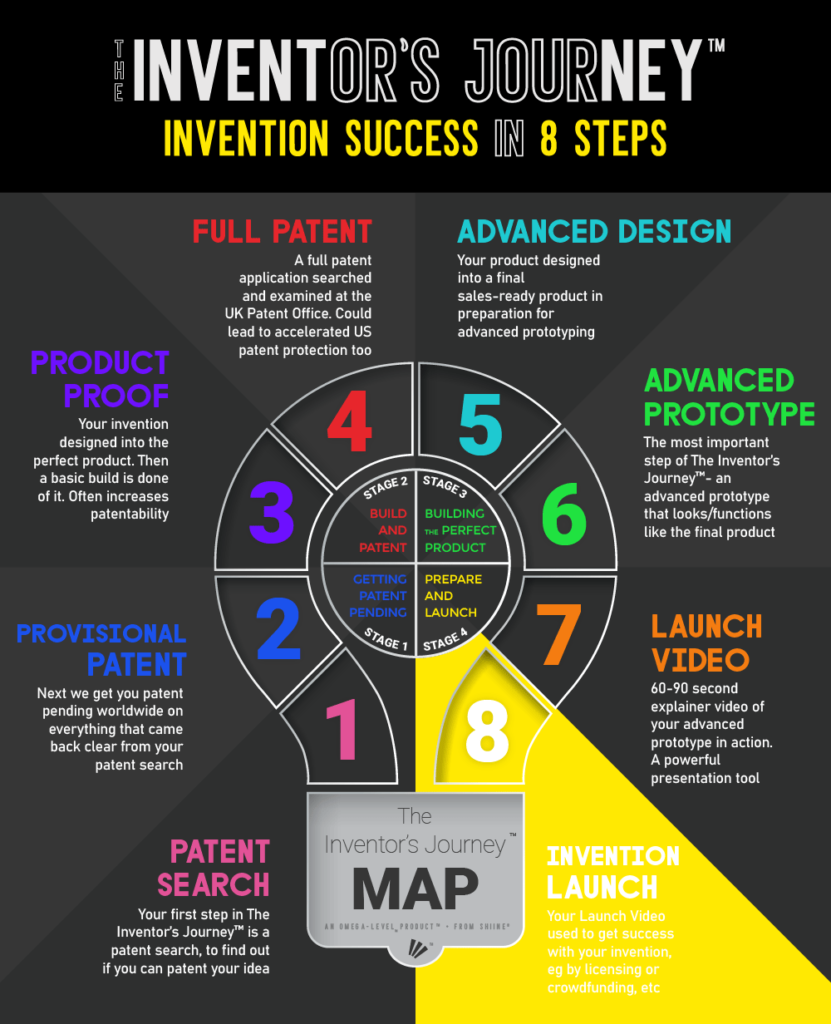DEADLY MISTAKE #4
PROMOTING YOUR INVENTION
AFTER FILING FOR A 'PROVISIONAL PATENT'
Dangerous (You Can lose the right to patent your invention)
It’s extremely dangerous to start disclosing your invention, non-confidentially, merely after having only filed a provisional patent application. In every country other than America, if your provisional patent application is not done completely right, it could mean you have just DESTROYED your chance of being able to patent your invention, and that your own disclosure can count against you (and block you) in trying to patent your invention.
No Protection (No Such thing as a ‘provisional patent’)
Many inventors think filing a provisional patent application gives you ‘protection’, or ‘protects your idea’, or gets you a ‘provisional patent’. All, of these things are incorrect. There is no such thing as a ‘provisional patent’, and filing a provisional patent application, (or any patent application, for that matter), does not get you any patent protection. It merely gets you a ‘filing date’ and ‘patent pending status. Watch this very good videothat explains very clearly what filing a provisional patent application gets you and what it does not:
Deadline (Clock Starts Ticking)
Even if all is done correctly with your provisional patent application, it only comes into play if you file a FULL (non-provisional) patent application within 12 months of your provisional patent application, and ‘claim priority’ back to your provisional patent application.
On top of this, the moment you disclose your invention non-confidentially, this also sets a deadline in the American patenting system. Unlike other patenting territories, the American patenting system has quite an inventor-friendly rule, called the ’12 months grace period’. What this means is that, even if you go public with your invention, disclosing it non-confidentially, in the American patenting system, even if you haven’t filed a patent application at that point, you can STILL patent your invention as long as you file a patent application no later than 12 months from that disclosure.
Here’s the problem- if you don’t have the money to get your full non-provisional patent application drafted and filed within that 12 months, the deadline will pass and you will LOSE THE RIGHT TO PATENT YOUR INVENTION. This, of course, is every inventor’s nightmare.
Don’t Disclose Yet!
The first way to deal with this issue is to not disclose your invention.
Back when I personally was handling all the patenting cases that came our way, I would not allow my clients to disclose their invention until we had at least had the patent office results come back at step 4 of The Inventor’s Journey™, where I would draft and file a full (non-provisional) patent application and get it searched and examined at the patent office, very quickly.
But the truth is, if you go on The Inventor’s Journey™, you won’t need to worry about this problem at all, because your invention will not be disclosed at all until the final step of The Journey, step 8. There’s really no need to disclose your invention before then, and it’s been proved over many decades that the strategy of merely filing a provisional patent application and then disclosing your invention non-confidentially is an extremely unsuccessful strategy. And as the information in this Deadly Mistake also shows, it can also be incredibly destructive to your patenting and even lead to you losing the ability to patent your invention.
Instead, take your invention through the steps of The Inventor’s Journey™. We’ll max out your product development, max out your patenting, and we’ll only then disclose your invention when we launch your invention, whether it be by trying to get a licensing deal, or self-launching your invention, or both.
I know it can SEEM like you feel you need to ‘get your invention out there’ and go public with it. But in truth, that’s an EMOTIONAL need- it is not correct thinking if you want to do things in the best way possible. Hold back the need to disclose, commit to The Inventor’s Journey™, and let’s do this the right way. (As a healthy side-effect, if you do that, you can consider this Deadly Mistake DEAD!)


All rights reserved.